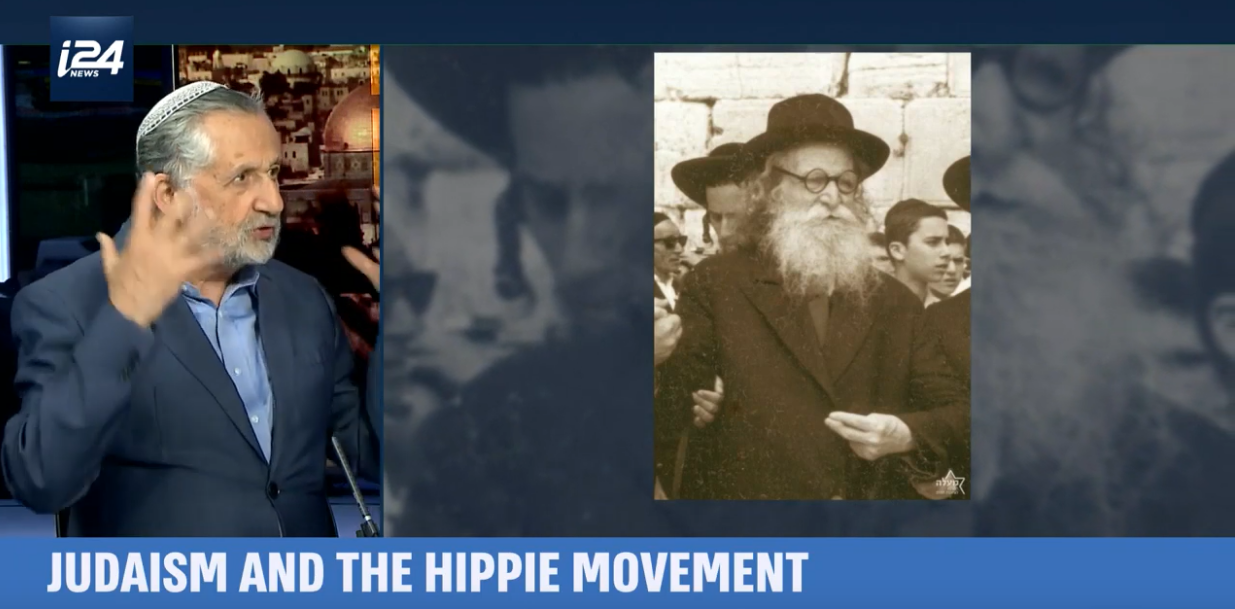Itzchak EvanShayish: Watch-The Legacy of Rabbi David Cohen-HaRav HaNazir TZ’L: Rav Kook TZ”L’s main student
Cohen was born in Maišiagala, near Vilna (in modern Lithuania), the scion of a distinguished rabbinic family. In his youth he studied at the Raduń Yeshiva under Rabbi Yisrael Meir Kagan, at the Volozhin yeshiva, and at the yeshiva in Slabodka. Even at that time, his restless and inquiring mind led him to extend his studies beyond the traditional subjects taught in the yeshivot. Thus he turned to Rabbi Samson Raphael Hirsch and the early writings of Rabbi Abraham Isaac Kook. He also studied Russian to prepare himself for entrance to the university.
During the Russian Revolution of 1905 he was twice arrested but was not detained. His spiritual unrest and the desire to widen his intellectual horizon led him to enroll in the Academy for Jewish Studies established by Baron David Guenzburg, where one of his close fellow students was Zalman Shazar, later president of Israel. From there he proceeded to Germany to study at the University of Freiburg. At the outbreak of World War I he was interned as an enemy alien, but was released and made his way to Switzerland, studying philosophy, classical literature, and Roman law at University of Basel.
He was for a time chairman of the Jewish Students’ Society there and delivered lectures on Jewish philosophy. It was then that he took upon himself a lifelong Nazirite vow, which involves complete abstention from cutting one’s hair and partaking of any products of the vine. However, his personal asceticism went further: he became vegetarian, eschewing not only meat but also any garment made of leather, and practiced a monthly self-imposed silence every Rosh Hodesh eve (Yom Kippur Katan), as well as for around ten days a year from Rosh Hodesh Elul to the morrow of Yom Kippur. In addition, he refused to speak anything but Hebrew, or to leave the Holy City of Jerusalem. However, he was not a recluse, and did not hesitate to express his views on important topical problems.
The turning point in his life came with his meeting, on 29 Av, with Rabbi Kook, who was then in St. Gallen in Switzerland (1915). “My life then stood in the balance,” he noted. “I listened to him and was turned into a new man . . . I had found a master.” He decided to abandon his secular studies and devote himself entirely to Jewish thought.
In 1922 he received an invitation from Rabbi Kook, who had returned to the Land of Israel, to become a tutor in the yeshiva which he had established. He helped draw up the curriculum, which was also to include history, philosophy, ethics, Hebrew grammar, and Bible. He was appointed lecturer in Talmud, ethics, and philosophy.
The two used to meet daily, and Rabbi Kook entrusted him with the editing of his philosophical works, to which, along with disseminating Kook’s ideas, he dedicated his life, hardly publishing any of his own works, although he left over 30 works in manuscript. The principal exception was the Kol Nevu’ah, of which the first volume appeared shortly before his death. It is the fruit of his life’s work and is in two parts, “The Foundations of Jewish Religious Philosophy” and “The Foundations of Inner Wisdom.” The work is based on the premise that there is an original Jewish philosophy and a spiritual Jewish system of logic which is not intuitive speculative but spiritual-acoustic: “Sound and light are the two angels of thought which accompany man everywhere” but “hearing is greater than seeing.” The prophetic power is the beginning of Jewish wisdom, and he was convinced that the renewal of Jewish life in Israel would produce a new generation to which would even be vouchsafed the return of the spirit of prophecy.
A passionate adherent of Rabbi Kook’s doctrine that the return to Zion and its various stages, of which the establishment of the State of Israel was the latest, was itself only a stage in the fulfillment of the Divine Promise that would bring about the complete Redemption and the Messianic Age, he did not hesitate to reprove those rabbis who did not accept this belief. He saw in Rabbi Moses Hayyim Luzzatto the harbinger of this redemption, pointing out that the three significant movements, Hasidism, Musar, and Haskalah, had each made certain of Luzzatto’s works their classics, and he claimed that both Rabbi Kook and he himself followed his doctrines.








